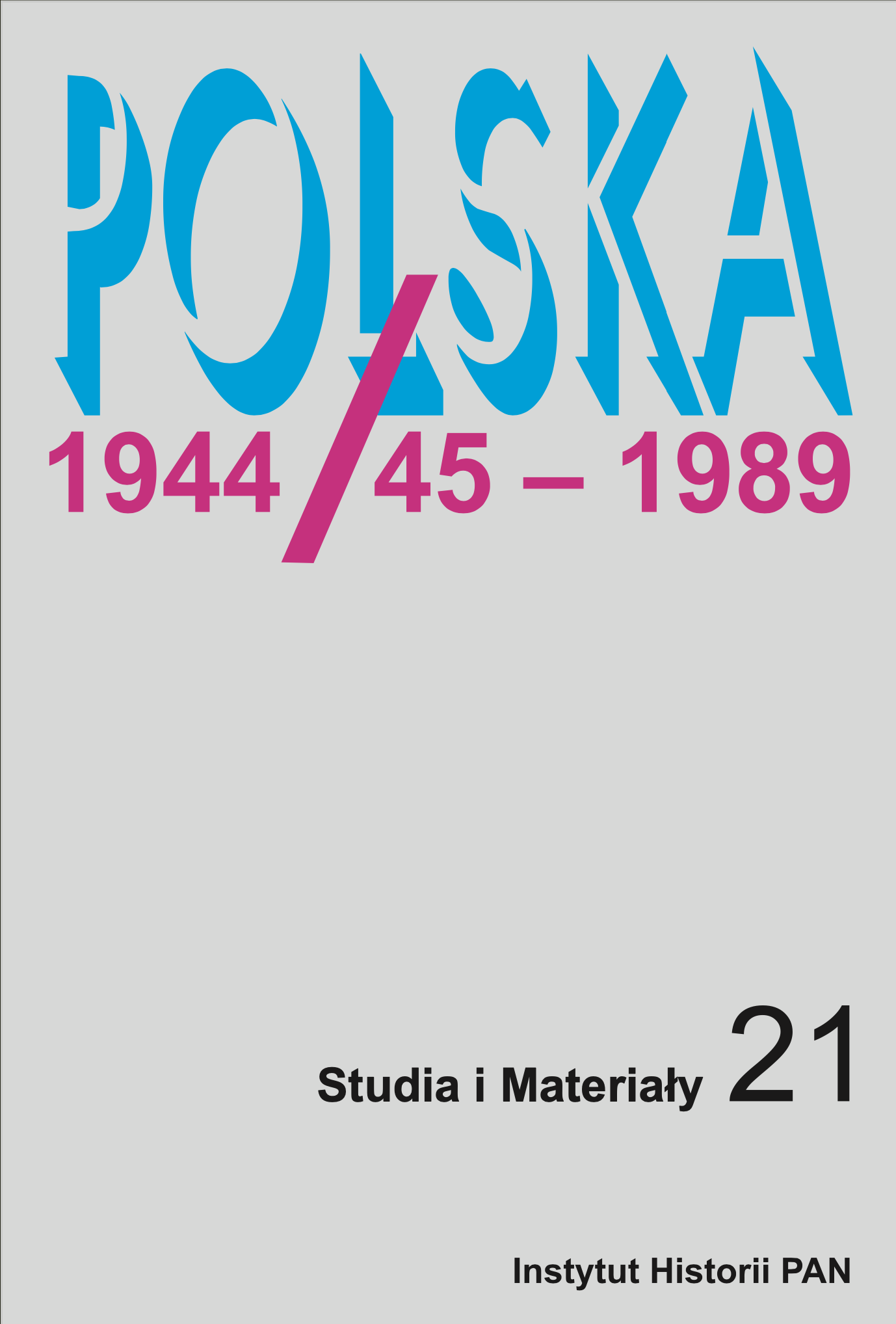Konspiracja w PRL w latach 1956–1970. Próba charakterystyki
Conspiracy in Poland, 1956–1970. An Attempt at Characterisation
Author(s): Piotr ByszewskiSubject(s): Military history, Political history, Post-War period (1950 - 1989)
Published by: Instytut Historii im. Tadeusza Manteuffla Polskiej Akademii Nauk
Keywords: underground; opposition; secret organisation; leaflets; inscriptions; social resistance; Security Service;
Summary/Abstract: The article’s subject is the anti-system conspiracy in the People’s Republic of Poland under Władysław Gomułka (1956–1970). It has been scarcely researched by historians (except for the largest organi- sation of the time, the Movement [Ruch]) and is very poorly known for this reason. There were clandestine organisations active during the analysed period – as a rule, these were small, temporary groups. Only a few – including “Ruch”, the Liberation Army (Armia Wyzwolenia), and the National Democratic League (Liga Narodowo-Demokratyczna) – existed longer and brought together more people. Predominated anti-communist groups and organisations were formed mainly by young peo- ple, who were, in many cases, still underage. A few organisations were formed by adults, such as the “Ruch”. Individuals also carried out activities of a conspiratorial nature – the distribution of leaflets and writing of anonymous letters, the painting of inscriptions on walls, and the destruction of com- munist symbols. Not infrequently, these were ad hoc in nature, and no organisation was set up (an example is the largest leaflet action in 1970 – a distribution of the “Proclamation of the National Confederation to the Polish Nation”). The largest number of leaflets was distributed in 1968 during the March student protests, after they were suppressed, and after the Warsaw Pact troops invaded Czechoslovakia. This was done, among others, by clandestine student groups continuing resistance against the authorities after the suppression of the March protests (e.g. Bogusława Blajfer’s group in Warsaw). The underground at the time was incomparably weaker than in the post-war years or the period following martial law’s imposition. It did, however, confirm the reluctant or even hostile attitude in parts of society towards the authorities of the time. It is worth noting that this was the beginning of their opposition activity for a large group of people later active in the Movement for Defence of Human and Citizen’s Rights, the Committee for Social Self-Defence KOR, Solidarity, etc.
Journal: Polska 1944/45 - 1989
- Issue Year: 2023
- Issue No: 21
- Page Range: 53-88
- Page Count: 36
- Language: Polish

